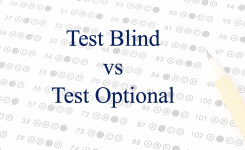College Admissions
Tips for Building a Balanced College List
May 17, 2021 - College Admissions
By Tonya DuBois
As you build a list of colleges you are considering, it’s important to balance it with schools where you are likely to gain admission, along with those that are more of a stretch.
You will first go through all the exercises I’ve taught you in order to examine colleges and universities that fit your needs – geographic region, availability of your likely major, school size, and whatever is most important to you. You will then visit a variety of these schools before narrowing down your selection.
Once you have a broad list, you’ll need to categorize the schools into “likely,” “target,” or “reach” schools. It’s important to have 2-3 likely and 2-3 target schools on your list. (If you are aiming for significant merit scholarships, then you should have even more.) As for reach schools, a good rule of thumb is to have one reach school for every likely or target school on your list. If you have 3 likely and 3 target schools, then 6 reach schools would be appropriate and create a well-balanced list.
So, how do you know if a college is a likely, target, or reach school?
1. Examine each college’s Common Data Set online – sections C9-C11 summarize the most up-to-date information about the most recent class that was accepted. This report will show you the average GPA of admitted students, SAT scores, etc. If your academic record falls within their middle 50% of admitted students, it’s probably a target school. If your record falls below, it’s a reach school, and above it’s a likely school.
2. Also check the percent of students who are accepted, relative to those who applied (section C1). Any school that accepts less than 15% of its applicants is ALWAYS a reach school – even if you have stellar scores and grades. Why? Because they simply cannot accept all the qualified students who apply.
A few important factors to keep in mind as you consider this data:
1. In this new test-optional environment, those who tend to submit SAT scores are the students with really high scores; therefore, the scores may look higher than in years past. If you take a look at the previous year’s Common Data Set, too, that will help give you a clearer picture.
2. Students who apply Early Decision will have an increased chance of admission over Regular Decision, assuming they are already competitive in the applicant pool.
3. For public universities, the middle 50% represents both in-state and out-of-state students. If you are an out-of-state applicant, the bar for admission is typically set much higher, so your scores/grades will need to be a little higher than the middle 50% to be competitive.
Now that you have a well-balanced list of colleges, your next step will be to get yourself organized as you start your application process. If you are a part of my Windstar Crew, you will receive a “college application tracker” – an excel document where you can track all your college applications – everything from due dates, to application type, to supplements, and much more. If you are not a part of my program, I encourage you to develop a document to track all the necessary parts of the admission process.
Have fun exploring colleges and finding good-fit options. Remember, for every reach school on your list, there should be one target or likely school too – this will help you achieve balance on your college application list.









